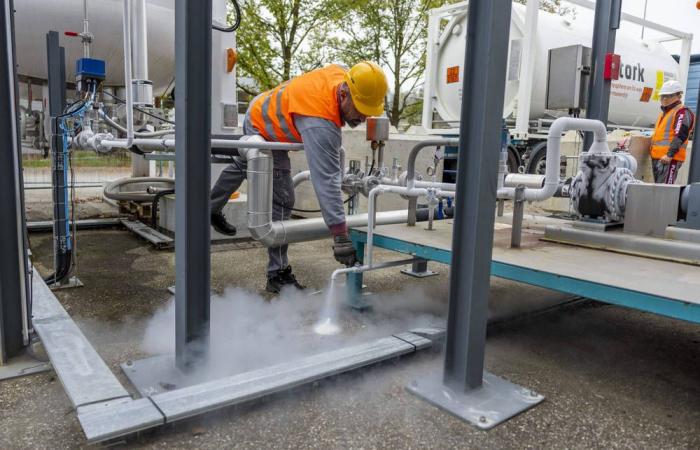At the Geneva Aïre wastewater treatment plant (STEP), the production of biomethane from sludge from wastewater no longer releases CO2 in the atmosphere. The carbon dioxide is now captured and liquefied. It is then sent to a cement manufacturer who traps it in recycled concrete using a process developed by the Bernese company Neustark.
Managers of the Aïre STEP, the Geneva Industrial Services (SIG) are at the start of the chain by supplying Neustark with its raw material, CO2. For now, GIS is in a testing phase with this project. They rented the equipment to liquefy carbon dioxide.
“We can thus get our hands on these new professions,” explains Frédéric Schulz, director of drinking water and gas at SIG. The trial phase lasts three years. If the results are conclusive, the company will deploy these new installations as part of the renovation of the Aïre wastewater treatment plant.
This project helps avoid the emission of 1,500 tonnes of CO2 per year of the biogas plant located on the STEP, indicate the SIG. Biogas is composed of 60% methane and around 40% carbon dioxide, as well as a little ammonia, recalls Mr. Schulz. Only biomethane is injected into the SIG gas network, making it possible to heat 1000 homes.
CO2 transportable liquid
SIGs therefore extract carbon dioxide from biogas using equipment which acts as a molecule filter. They previously released this carbon dioxide into nature. Today, they liquefy it by bringing it to a very low temperature, then store it in a tank set up in the heart of the STEP.
In liquid form, CO2 becomes easily transportable. This is where the Bernese company Neustark steps in. It transfers the carbon dioxide into a tanker truck which will transport its cargo to a cement manufacturer. On site, the carbon dioxide is regasified.
Neustark then transforms the carbon dioxide into limestone by integrating it into concrete aggregates from demolished buildings or other mineral waste. These aggregates can then be used for the manufacture of recycled concrete or in road construction.
Structure stable
Limestone having a very stable structure, CO2 can remain imprisoned for centuries. You just shouldn’t subject it to a temperature that exceeds 600 degrees or expose it to strong acids, notes Elmar Vatter, spokesperson for Neustark. In these extreme situations, carbon dioxide regains its freedom in gaseous form.
This CO capture technique2 is a way to fight against climate change, carbon dioxide being one of the gases which contributes to the greenhouse effect. “We eliminate pollution, CO emissions2it’s good for the climate and the environment,” comments Mr. Schulz.
Founded in 2019, Neustark was one of the first companies to commercialize the elimination of carbon dioxide by mineralization in demolition concrete. Before its collaboration with SIG, the Bernese start-up only had CO suppliers2 in German-speaking Switzerland.






